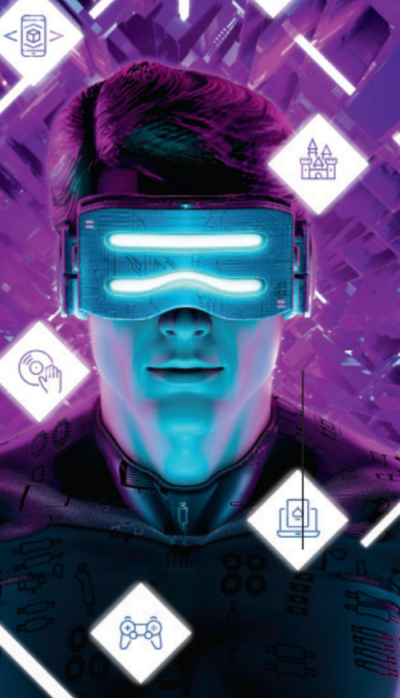HITS

M&E Journal: Leveraging 5G to Drive Innovation and Creativity in Hollywood
Story Highlights
By Jeffrey Thompson, Senior Director, M&E, Luxoft –
The M&E industry is experiencing an unprecedented wave of technological advancements that will continue to disrupt and advance the industry. This disruption can clearly be seen by the sweeping number of recent acquisitions from brand leaders across the industry (including Walt Disney-21st Century Fox- Hulu, AT&T-WarnerMedia, Amazon-Twitch, Spectrum-Charter-Time Warner Cable, NBCUniversal-DreamWorks Animation), with more to come.
While there are many reasons for this consolidation, the most important is the transition to digital, mobile technologies that have accelerated the growth of nontraditional media companies like Facebook, Google, Amazon, Netflix, Spotify and Apple, while continuing to advance the way audiences behave and consume entertainment at home and in theaters, concert venues, online, amusement parks and sporting events.
To survive and thrive in this disruptive space, entertainment companies must double down on the exploration of new business models and technologies to reach audiences that are increasingly mobile, harder to find and entertain, and clearly more difficult to monetize.
5G is one of the most significant technologies in a decade, and it is launching at scale this year to continue this disruptive trend.
Brace for the impact of 5G
While there is debate over exactly how much market growth will be accelerated by 5G, it should be noted that all forecasts show 5G will substantially increase the velocity of growth. IBC forecasts a 50 percent acceleration of mobile due to 5G, while another entity predicts a cumulative $800 billion increase in M&E industry revenues due to the addition of incremental services, products and entertainment experiences related to 5G.
Media executives say this advancement will be fueled by 5G’s ability to enable the creation and deployment of innovative entertainment experiences in ways content creators — including film/TV studios, game creators, advertising agencies, arena marketers and live sports companies — could only dream of in years past.
In addition, the deployment and scaling of 5G will allow for an entire ecosystem of experiences to come to fruition around technologies like augmented reality (AR), virtual reality (VR), cloud-based video gaming and true “live” mobile experiences.
As 5G continues to scale, additional business segments will benefit with the addition of new network services allowing for “network slicing,” meaning allowing some content to be streamed at faster rates and others streamed at slower tiered speeds over the same network.
Below are some of the key use-cases predicted by deployment of 5G.
Live entertainment, including game shows
These experiences will include exploration and advancements with live entertainment and gaming shows due to real-time “live” experiences enabled by 5G due to reduced latency, real-time editing capabilities and an unsurpassed ability to integrate audiences into entertainment experiences at scale and in real time. When combined with advancements in AI, real-time predictive analytics and automation, 5G will revolutionize the way content is deployed, consumed and monetized.
Imagine an American Idol show or a Survivor episode with a real-time audience feedback experience that changes the way audiences interact and consume content, while also changing the way the shows are concepted, produced, funded, launched, marketed and measured. Or at a baseball game, think about the possibility of seeing the incoming pitch from the batter’s point of view through virtual reality.
 eSports and online gambling
eSports and online gambling
Reduced signal latency will also result in advancements for online gambling, mobile gaming and eSports leagues, where business models rely upon a true “live” experience and interactivity is built into the experience.
These businesses are expected to grow exponentially over the next three years according to IBC, led by new offerings in eSports, mobile gaming, online gambling and cloud-based gaming experiences that leverage an ecosystem that will be built off the deployment of 5G.
Additionally, say goodbye to lag — a.k.a. the delay between the time a user inputs a command and when the software initiates it — which creates a true live experience without any frustrations for players.
While 300 million people worldwide watch eSports, that number is estimated to climb to 500 million by 2020. In order to stream everything in a “live” fashion, 5G will be necessary for success.
Theme parks and concert venues
5G will enable transformational event experiences to enhance guest experiences while also enabling ancillary back-end customer service functions to improve leveraging technology that optimizes the mobile ecosystem, including geofencing, automation, IoT and cloud. This will lead to advancements in targeted guest promotions, real-time interactive experiences in a theme park/stadium environment (such as live interactive tour guides and hyper-targeted ads/promotions based on location), as well as improvements in operational functions such as predictive ride maintenance and automated service operations.
For example, in South Korea, a new theme park will be equipped with 5G, enabling virtual reality, mixed reality, air quality monitoring via the IoT (as the park is outside), and intelligent CCTVs to ensure the safety of visitors.
VR/AR
VR and AR segments will be fueled by the additional mobile bandwidth enabled by 5G. This will lead to the development of incremental experiences aligned with major events, such as the Olympics, Super Bowl or tentpole film initiatives.
It also extends to cloud-based video gaming, live event experiences at places like a NASCAR race, and expansion of franchises like WarnerMedia’s Batman to another product category.
With the power necessary to make VR and AR a reality, 5G will help unlock new applications that will deliver more than $140 billion in revenues between 2021 and 2028.
Ready for the 5G future
Overall, the deployment of 5G will lead to exciting advancements across the media and entertainment ecosystem and lead to immersive entertainment experiences that will challenge our imagination, build new businesses and satisfy a new generation of fans.
————————
Click here to translate this article
Click here to download the complete .PDF version of this article
Click here to download the entire Spring/Summer 2018 M&E Journal









